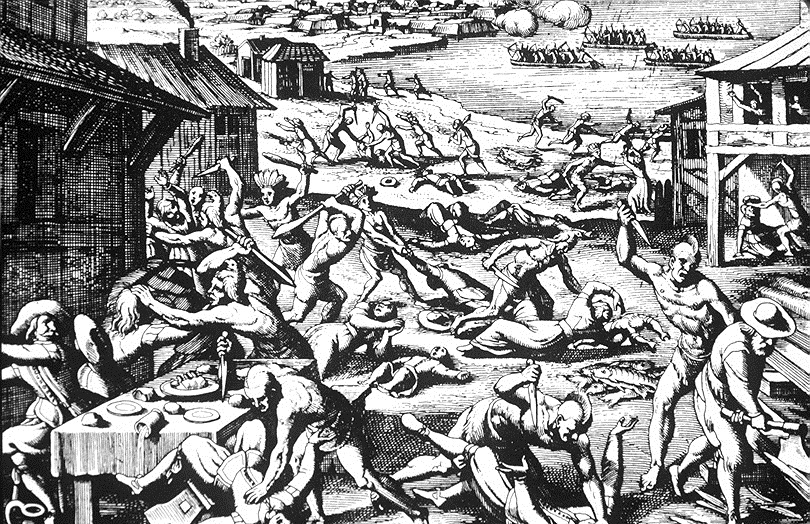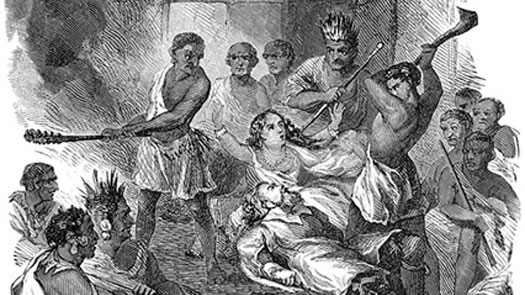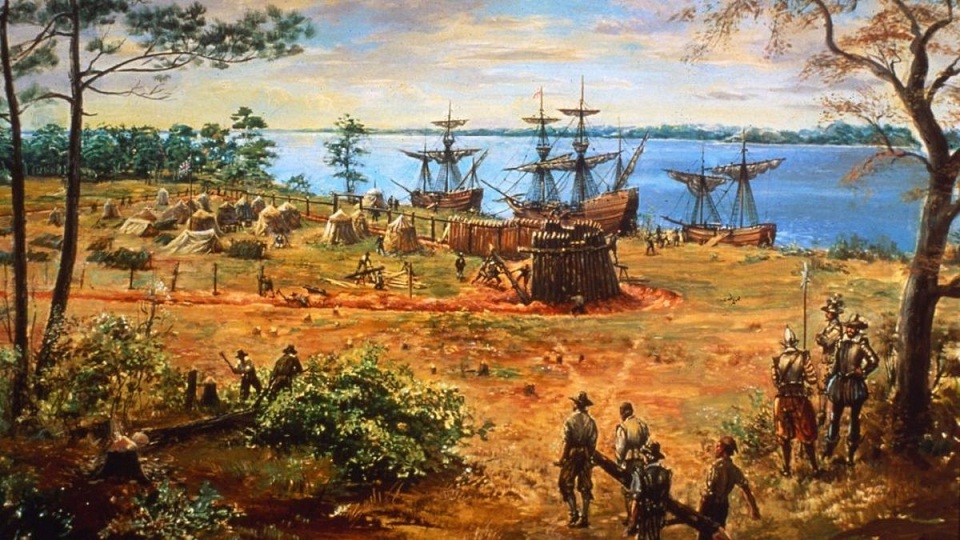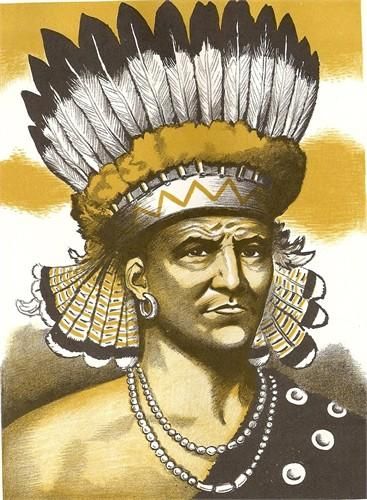The Second Anglo-Powhatan War
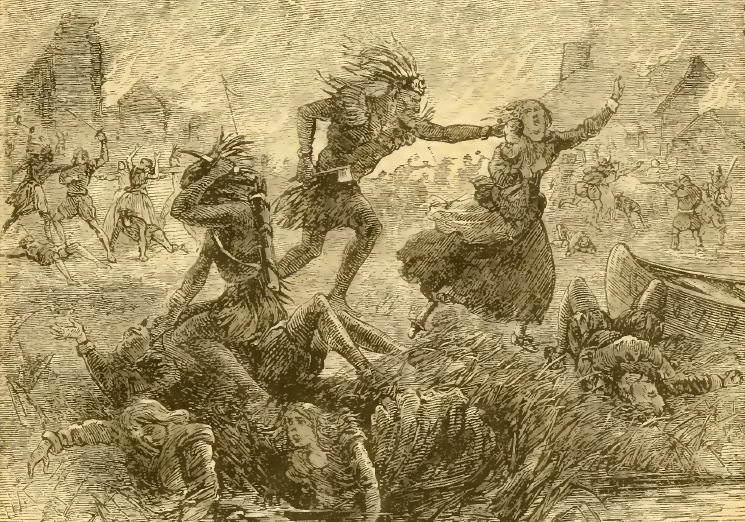
The years after the 1614 treaty between the English and the Chickahominy were relatively peaceful. During this time the English colonists in Jamestown expanded their tobacco raising enterprises, often appropriating Indian corn fields for this export crop.
In 1618, Wahunsonacock (also known as The Powhatan) died. There was a leadership struggle among the Powhatan and Opechancanoe emerged as the new leader of the confederacy.
Concerned about the increasing use of guns by the Powhatan, in 1618 the English decreed that Indians were not to be taught to shoot guns. The decree mandated death for both teacher and student. The following year, a death penalty was established for anyone selling guns to the Indians.
In 1621, the Reverend Jonas Stockam preached that the only way of bringing the gospel to the Indians was to kill the elders: “till their Priests and Ancients have their throats cut, there is no hope of bringing them to conversion.”
The flash point that started the Second Anglo-Powhatan War centered around Nemattanew (Jack of the Feathers), the charismatic war chief of the Pamunkey. Nemattanew would go to war covered with feathers and with swans’ wings attached to his shoulders. In some instances, he would bewitch enemy warriors, including the English soldiers. He had been revitalizing native culture and warrior traditions, preparing them for combat against muskets. He was thought to be invulnerable to bullets.
The starting point of the Second Anglo-Powhatan War is generally traced to 1622 when Nemattanew persuaded an Englishman named Morgan to go to Pamunkey to trade. This was the last anyone saw of Morgan. A few days later, however, Nemattanew went to Morgan’s house and informed the two young male servants there that Morgan was dead. The young men noticed that Nemattanew was wearing Morgan’s hat and they tried to take him to the authorities. When he refused, they shot him. As he was dying, he asked the young men not to reveal how he died.
Opechancanough was upset when news of Nemattanew’s death reached him and he vowed revenge. However, it also seems that he had been planning his attack on the English colonists for over a year. The death of Nemattanew simply provided an additional excuse for the war.
Two weeks after Nemattanew’s death, the Indians entered into the English villages, just as they often had in the past, bringing them presents of food. The next morning, they joined the colonists for breakfast and even joined them in working the fields. The Indians had come unarmed so there was little concern among the colonists. Then the Indians picked up the colonists’ tools and guns and began an unprecedented slaughter, killing men, women, and children. By the day’s end, 350 English colonists—one-fourth of the colony’s total population—were dead. The official count was 347 dead, but after its dissolution, the Virginia Company indicated that about 400 were slain.
Jamestown was not attacked. According to some accounts, often told a couple of centuries after the war, Christian Indians had warned the Jamestown colonists of the coming attack. The official account of the attacks, written shortly afterwards, makes no mention of this warning. In the nineteenth century histories of the colony, an Indian boy named Chanco is credited with warning the colonists, and yet no contemporary accounts of the colony make mention of this name.
The attack took the English by surprise and many argued that this strategy had been so clever that it could not have been masterminded by Indians and credited the Spanish with engineering it. There was, however, no evidence that the Spanish were involved.
The English retaliated with a series of raids on the Indians. Instructions from London to the Virginia colonies called for a perpetual war to exterminate the Indians and the Governor of Virginia issued a directive to rob, hunt down, and kill the Indians of the area. Military commanders were ordered not to make peace on any terms. Writing in the Handbook of North American Indians, Wilcomb Washburn notes: “the attack provided a ready-made justification for waging perpetual war (as Christian legal theory allowed against infidels) against any and all Indians. Too often the rules of honor were abandoned in the process.”
The Powhatan did not plan on engaging in a protracted war. They made their attacks, suffered few losses, and then did not make further assaults on the colonists. Unlike European warfare, Indian warfare was not about extermination. From an Indian perspective, the colonists were unruly and not behaving according to the natural laws that governed Indian conduct. The attacks were intended to simply teach the colonists a lesson. The goal was to restrict them to a small territory, to put an end to Christian proselytizing, and to demonstrate Powhatan power. By attacking only the outlying colonies and not Jamestown itself, the Powhatan attempted to show the English that these settlements were inappropriate.
The English colonists, of course, misinterpreted the message. They continued to view themselves as being endowed by their religion to occupy the lands of others, to convert them, and to rule all non-Christian nations.
